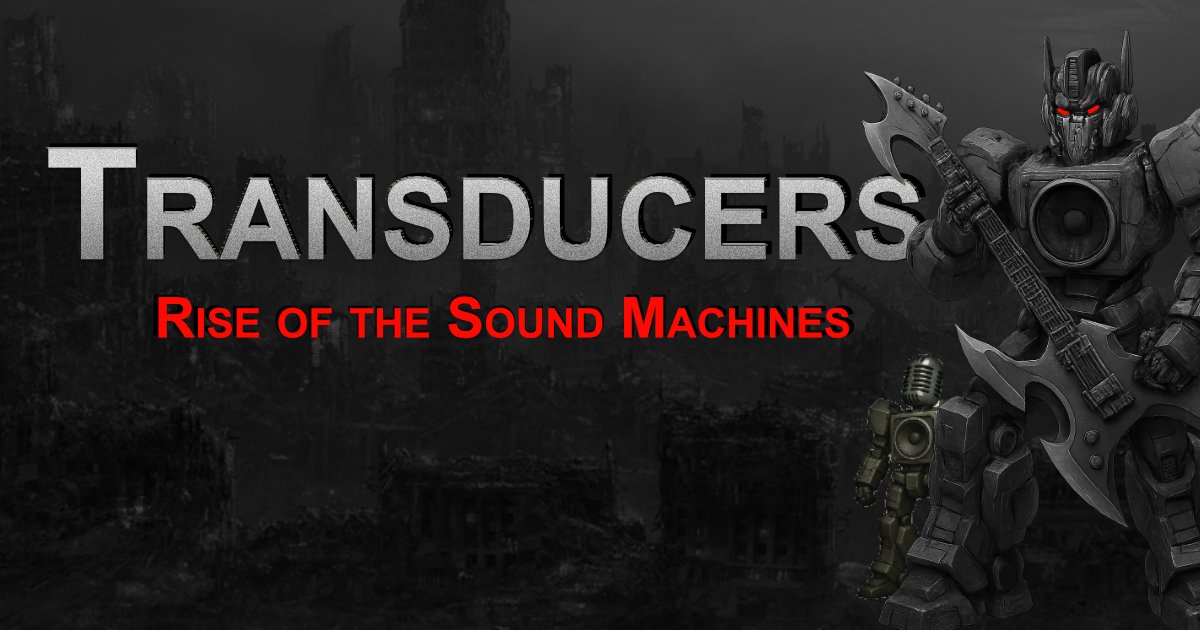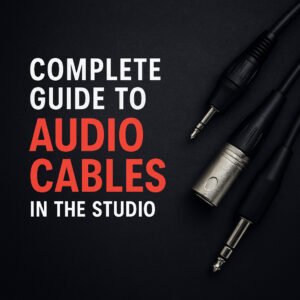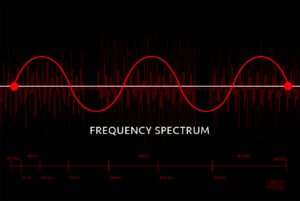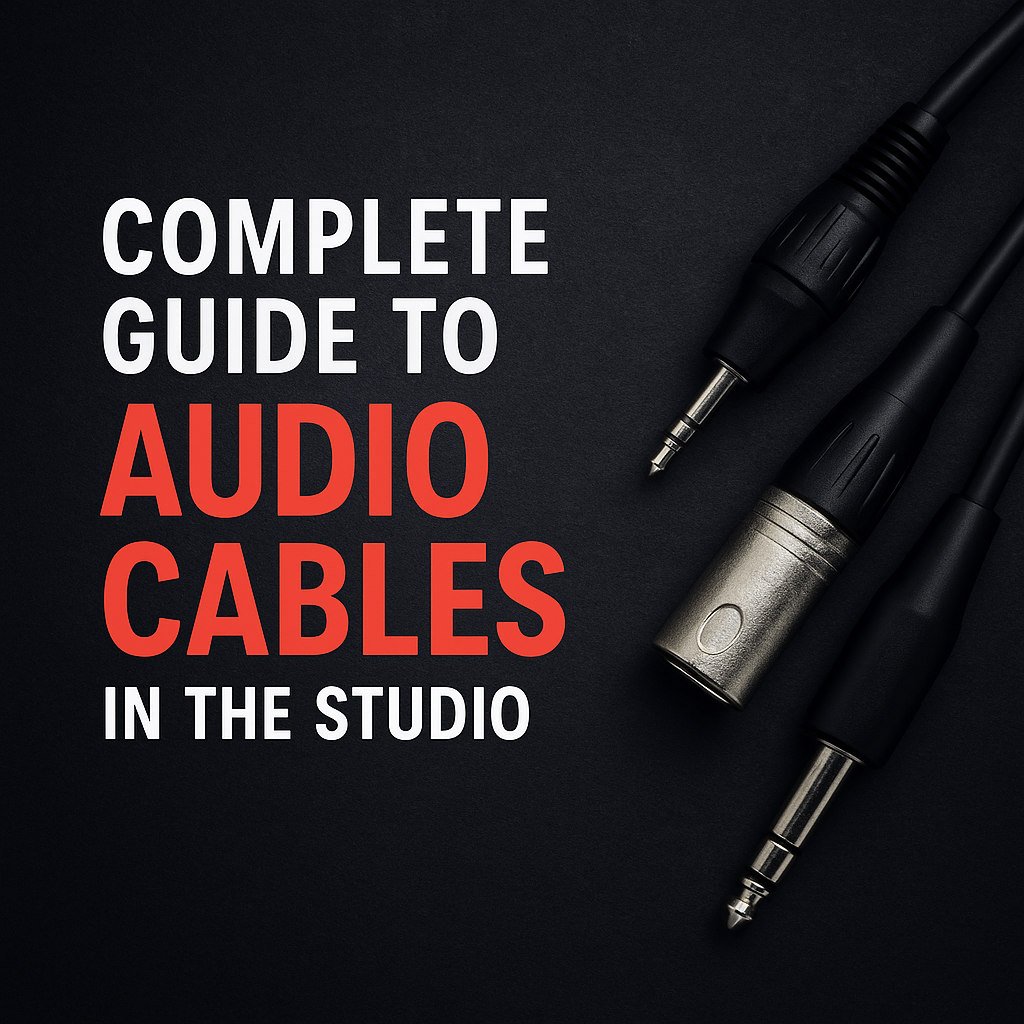Understanding the Unsung Heroes of Audio – The Mighty Transducer.

Let’s be honest—transducer sounds more like a villain from the next Transformers movie than something you’d find in your studio. I can already hear the trailer: “This summer… Transducer will convert energy. And destroy frequencies.”
But in real life, transducers are far less dramatic and a lot more useful. They’re the reason your microphone captures your voice, your monitors playback your mix, and your guitar pickup makes your amp sing. You use them all the time—even if you’ve never stopped to think about them.
If you’re a DJ, producer, guitarist, vocalist, or just a gear junkie, knowing what a transducer is and what it does can completely change how you use your tools. It can help you record better, troubleshoot faster, and understand your gear on a deeper level. So let’s dive in— I tend to go over the top with my research at times, but this time lets explore this without a white lab-coat, but with just enough depth to make things clearer without putting you to sleep.
What is a Transducer?
At its core, a transducer is any device that converts one form of energy into another. There are many forms of energy however in the audio world, we’re mostly dealing with two kinds of conversions:
- Acoustic energy into electrical energy (like in microphones)
- Electrical energy into acoustic energy (like in speakers and headphones)

That’s the basic definition. But the way these conversions happen—the materials used, the technology inside—determines everything from tone to fidelity to dynamic response. And in audio, detail matters.
There are basically 2 kinds of Transducers:
- Mechanical Transducers: Devices that convert physical quantities into a mechanical output, such as displacement, force, or pressure
- Electrical Transducers: Devices that convert physical quantities into electrical signals, such as voltage, current, or frequency.
Did you know? Our human body has 2 Audio transducers as well?
The Ear is a natural transducer, converting sound waves (mechanical energy) into electrical signals in the inner ear.
And yes we do the reverse as well – Similar to how the microphone converts sound waves to electrical signals, the voice box, or Larynx can be considered a transducer. It converts airflow from the lungs into sound waves, converting energy from one form to another. Specifically, it converts the kinetic energy of air into the mechanical energy of vibrating vocal cords, which then produce sound waves.
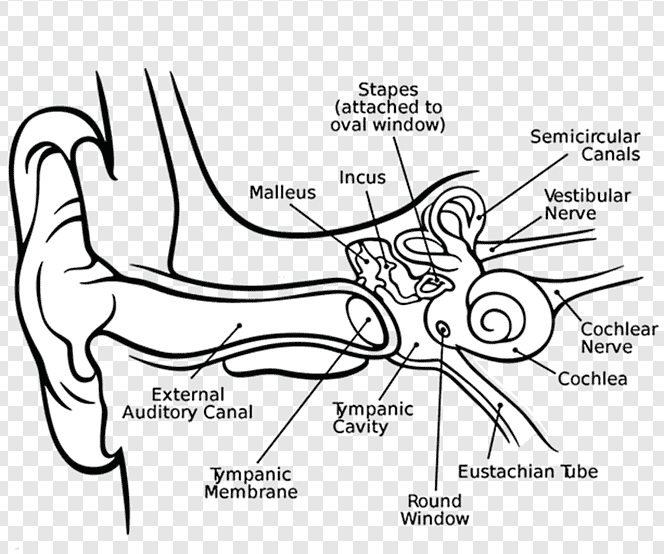
Though not related to audio here is another cool fact: Your skin can be considered a transducer as well. It converts physical stimuli like pressure, temperature, and pain into electrical signals that the nervous system can interpret. Even the hair follicles can be considered transducers. Specifically, the outer root sheath cells of hair follicles can act as transducers of mechanical stimuli into electrical or chemical signals that can be detected by sensory neurons. This allows us to perceive light touch and other mechanical stimuli on the skin.
Fascinating ! But lets get back to transducers in Audio.
Why Musicians and Audio Creators Should Care
You don’t need to be an engineer to benefit from understanding transducers. Every piece of equipment you use has at least one. Microphones, monitors, pickups, headphones, turntables—they all rely on transducers to function.
Knowing how they work can help you:
- Choose the right gear for the right job
- Avoid common technical issues in the studio or on stage
- Understand why your recordings sound the way they do
- Avoid blowing out your speakers or distorting your mix
Types of Audio Transducers and Where You’ll Find Them
1. Microphones
Conversion: Acoustic to Electrical
Transducer Type: Input
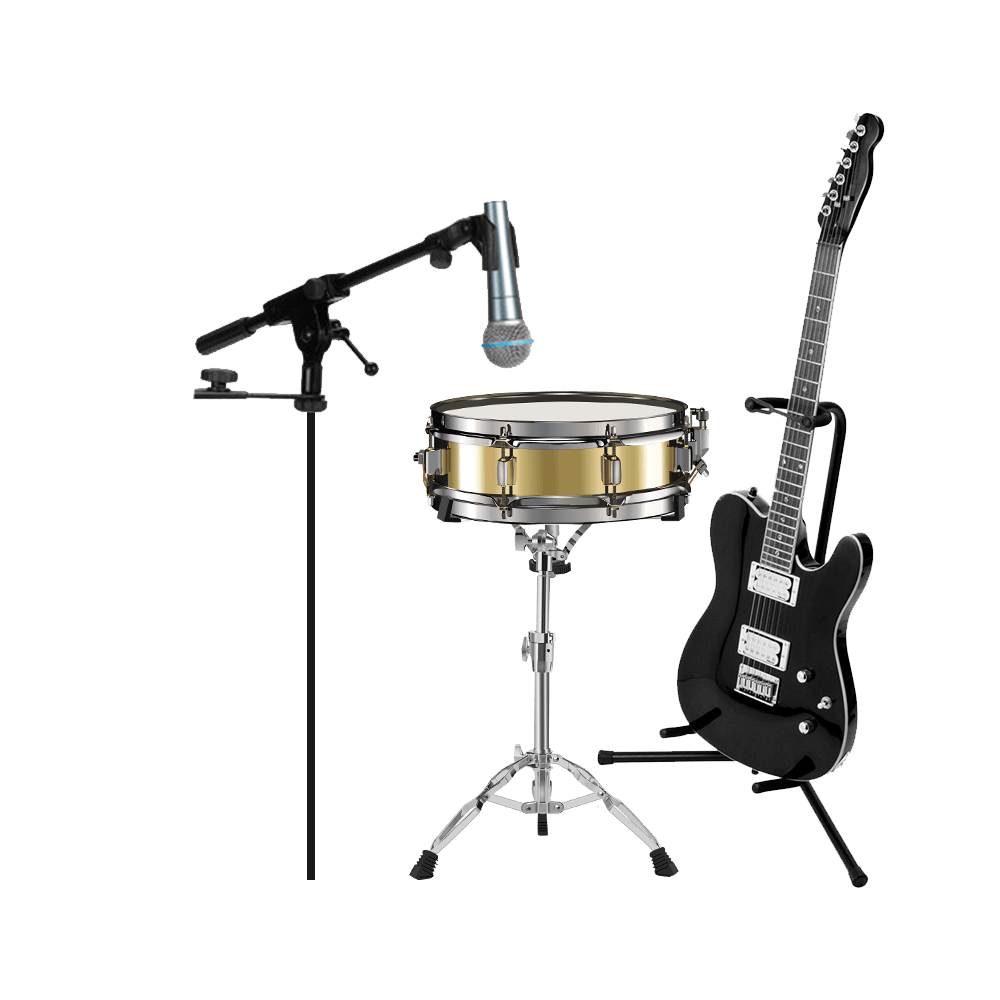
Microphones are probably the most well-known type of transducer. They capture air pressure variations—what we know as sound—and convert them into voltage. But not all microphones do this the same way.
Dynamic Microphones
Use electromagnetic induction. A coil moves in a magnetic field when struck by sound waves.
Best for: Live vocals, drums, guitar amps
Example: Shure SM58, SM57
Strengths: Rugged, handles high SPL, doesn’t need phantom power
Condenser Microphones
Use a capacitor (variable capacitance) where a diaphragm moves relative to a fixed backplate, altering the electrical charge.
Best for: Studio vocals, acoustic instruments
Example: Neumann TLM 103, Rode NT1-A
Requires: Phantom power (+48V)
Strengths: More sensitive and detailed, better for capturing nuance
Ribbon Microphones
Use a thin metal ribbon suspended in a magnetic field. The ribbon moves with sound and generates voltage.
Best for: Guitars, horns, strings
Example: Royer R-121, AEA R84
Strengths: Smooth, natural sound; excellent for vintage tone
Caution: Fragile. Don’t plug into phantom power unless it’s designed to handle it
Tip for vocalists: Want crisp, airy vocals? Go with a condenser. Recording harsh sources like a loud amp? A dynamic might save your ears and your preamp.
2. Loudspeakers and Studio Monitors
Conversion: Electrical to Acoustic
Transducer Type: Output
Speakers are the opposite of microphones. They take electrical signals and turn them into sound waves that we hear through air movement. The main components are:
- Voice coil: Receives the signal
- Magnet: Provides the field for interaction
- Cone or diaphragm: Moves air to generate sound
Types of Speaker Transducers:
- Studio Monitors: Flat response, designed for mixing (e.g. Yamaha HS8, Adam A7X)
- PA Speakers: Built for volume and projection, not accuracy
- Subwoofers: Handle only low-end frequencies, typically below 120 Hz
Producer insight: If your mix sounds amazing in your studio but falls apart in a club, the issue might be your low-end balance. Studio monitors will give you accuracy—but that only helps if you understand what you’re hearing.
3. Headphones and IEMs
Conversion: Electrical to Acoustic
Transducer Type: Output
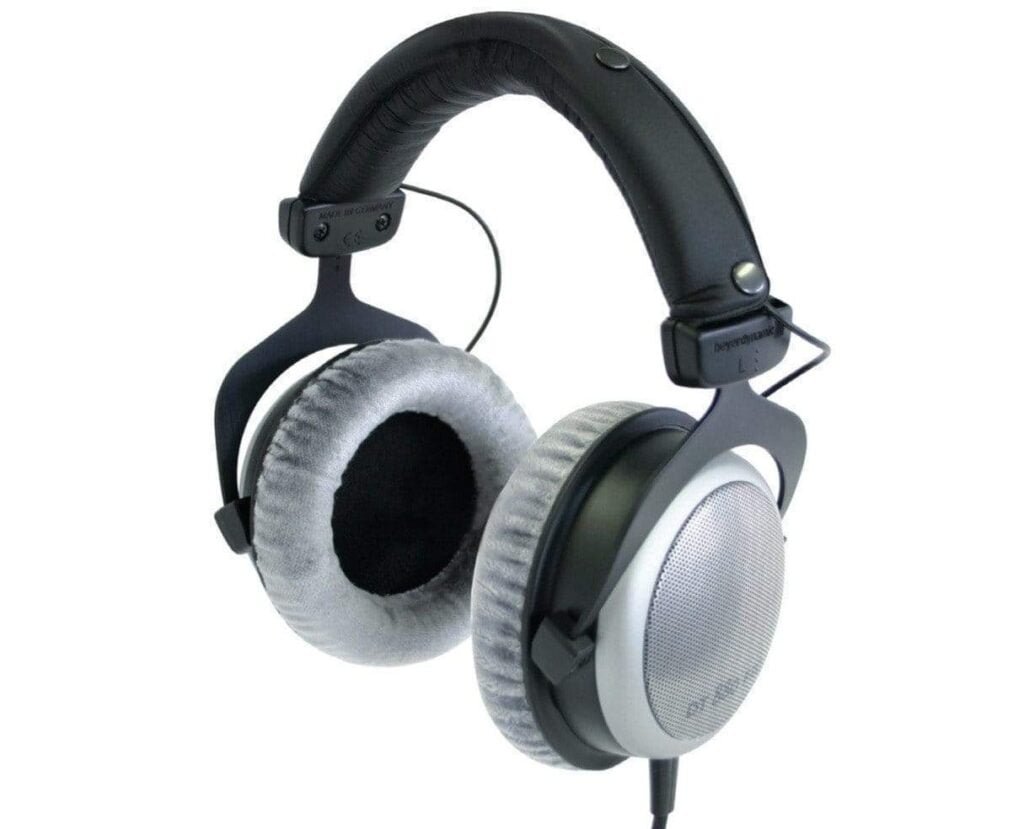
Headphones are essentially tiny speakers strapped to your ears. They use small transducers—usually dynamic drivers—to reproduce sound directly into your ear canal.
Categories:
- Closed-back headphones: Isolate sound, good for recording and tracking
- Open-back headphones: Allow sound to escape, ideal for critical listening and mixing
- In-Ear Monitors (IEMs): Used on stage for clarity and isolation
Many professional IEMs use balanced armature drivers—another type of transducer that provides greater accuracy but less bass extension.
DJ tip: If your headphones distort at high volume, the driver might be too small for bass-heavy sets. Upgrade to something with larger drivers (45mm+) for better handling of low frequencies.
4. Instrument Pickups (Guitars and Basses)
Conversion: Mechanical to Electrical
Transducer Type: Input
A guitar pickup is essentially a transducer that senses string vibrations and converts them into voltage.
Magnetic Pickups
Found in most electric guitars. Use electromagnetic induction—vibrating metal strings disrupt the magnetic field, generating current in a coil.
Types: Single coil (bright, sharp), humbuckers (warm, full-bodied, less hum)
Piezo Pickups
Common in acoustic-electric guitars and violins. These rely on pressure and vibration rather than magnetism.
Pros: Clean, accurate response of the body
Cons: Can sound harsh if not paired with a good preamp
Guitarist note: Piezo pickups need a proper impedance match. Use a DI box or onboard preamp to avoid thin, weak sound.
5. Phono Cartridges (Turntables)
Conversion: Mechanical to Electrical
Transducer Type: Input
In a turntable, the stylus sits in the groove of a record. As it tracks the groove, it vibrates. This vibration moves either a magnet or a coil, converting mechanical movement into electrical signals.
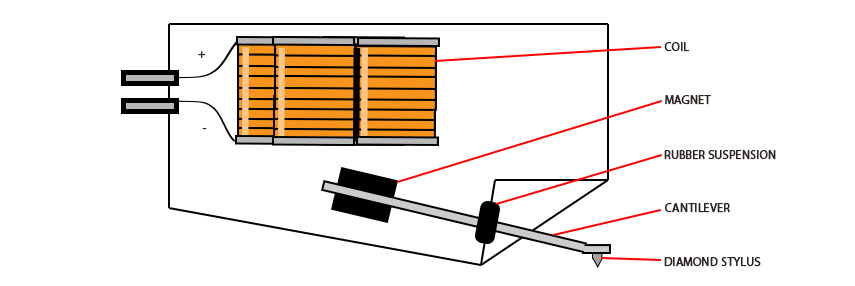
I have an entire article dedicated to Cartridges and Needles that you can check out if you want to geek out.
Types of Cartridges:
- Moving Magnet (MM): Durable, affordable, replaceable stylus
- Moving Coil (MC): More sensitive, but lower output and more expensive
Turntable tip: Scratching and back-cueing wear out styluses fast. Keep your cartridges clean and your tonearm balanced to extend cartridge life and maintain fidelity.
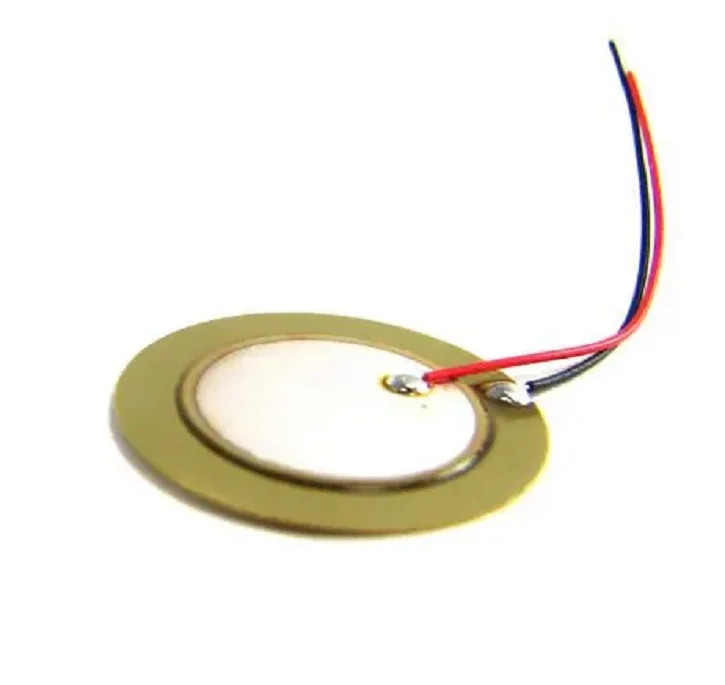
6. Piezoelectric Transducers
Conversion: Physical pressure or vibration to electrical signal
Transducer Type: Input
You’ll find these in drum triggers, clip-on tuners, and acoustic pickups. They work by generating voltage when compressed or vibrated. They’re popular in DIY audio gear, contact mics, and even MIDI drum pads.
While cheap and durable, piezos can be overly sensitive to touch and mechanical noise.
Drummer advice: When using piezo triggers on acoustic drums, isolate them with foam to avoid false triggering and cross-talk.
Real-World Applications and Takeaways
Every time your gear “hears” or “speaks,” it’s using a transducer. If your vocal recording sounds fuzzy, your headphone driver might be distorting. If your mix sounds too bright on a PA, your monitors may be under-representing high frequencies. If your guitar tone lacks punch, your pickup could be the weak link.
Knowing what kind of transducer you’re using—and how it works—can help you fix these issues. It can also help you make better choices the next time you’re upgrading gear.
References and Further Reading
- Ballou, G. (Ed.). (2015). Handbook for Sound Engineers. Focal Press.
- Audio-Technica. “What Is a Condenser Microphone?” audio-technica.com
- Sweetwater. “How Microphones Work.” sweetwater.com
- Sound On Sound. “Understanding Microphones.” soundonsound.com
- Audio Engineering Society (AES). Technical Papers. aes2.org
Final Thoughts
Transducers might not be glamorous. They won’t win design awards or get much attention in gear forums; But without them, you wouldn’t hear a thing. No vocals, no bass drops, no guitar solos. Every sound you make or manipulate depends on one of these devices doing its job.
So the next time you plug in your mic, drop a needle on a record, or crank up your monitors—spare a thought for the humble transducer. It may not transform into a robot, but it’s still doing some serious heavy lifting behind the scenes.

